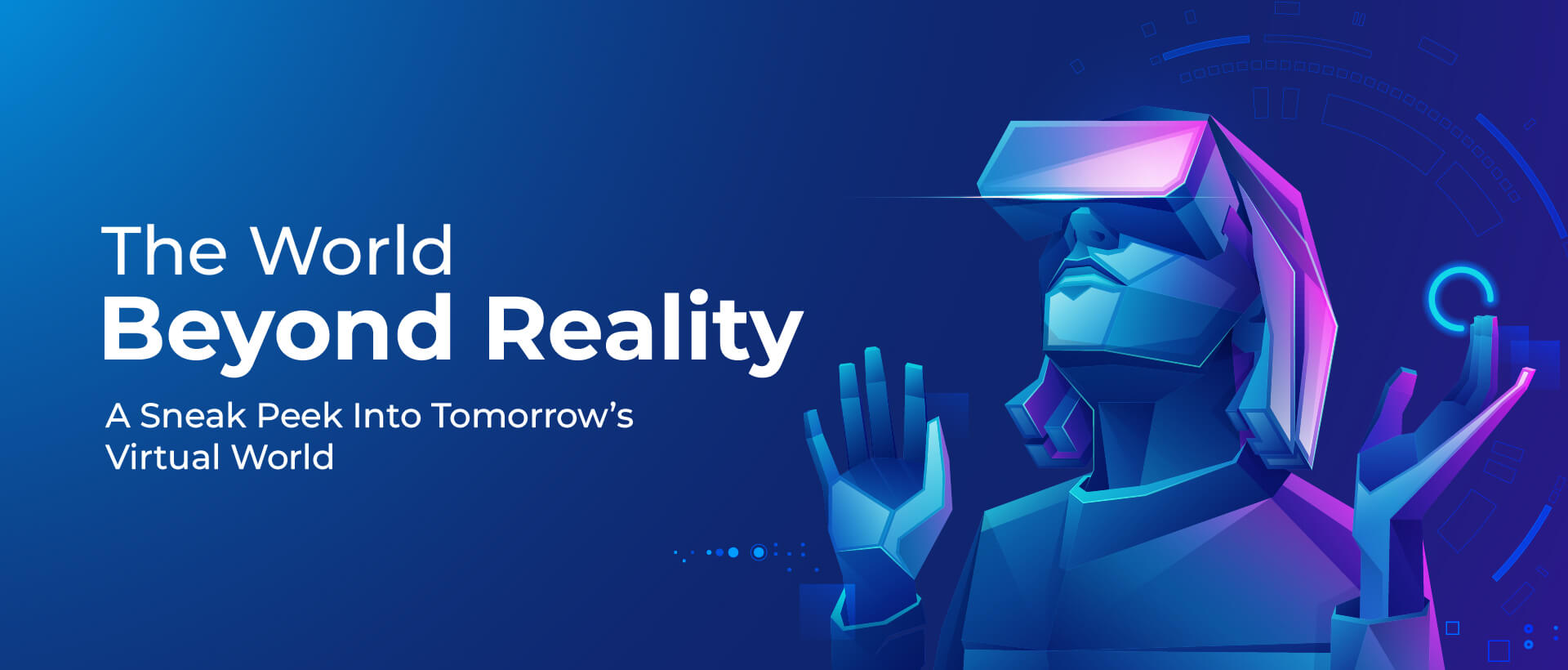
Although the roots of virtual technology trace back to the early 19th century, it is only in recent times that VR has begun to gain broader accessibility among the public. Since its commercial introduction in the mid-2010s, virtual reality has been steadily leaving its mark. The cost of hardware is decreasing, and the constraints of wires or the necessity for a high-end gaming PC are no longer as limited as before.
What is VR?
Virtual Reality (VR) is a technology that creates a simulated and highly immersive environment, aiming to deceive the brain into perceiving the experience as genuine. To engage with VR, users typically wear a headset, also referred to as a head-mounted device. The primary sensory inputs in virtual reality experiences are visual and auditory, as users are visually surrounded by a computer-generated environment and receive corresponding audio cues. Notably, advancements in VR technology have introduced touch-based interactions through haptic feedback, allowing users to feel sensations further, enhancing the sense of immersion within the virtual world. In essence, VR seeks to transport individuals to alternative realities, offering a multisensory experience that goes beyond traditional forms of media consumption.
Unveiling the Transformative Landscape of Augmented and Virtual Realities
The idea of the “Metaverse” has evolved from its roots in science fiction and has become a leading force in technological advancements. It envisions a digital realm where augmented reality, virtual reality, and the physical world seamlessly merge, offering the potential to revolutionise our social interactions, work dynamics, and digital experiences. In this article, we shall navigate through the intricacies of the Metaverse, analysing its current status, potential uses, and the significant influence it may exert on various aspects of our lives.
Exploring the Current Landscape
The Metaverse is not a singular entity but a collective term encompassing interconnected visual spaces. Being a part of the virtual reality evolution can be done primarily through virtual reality (VR) headsets; these spaces include social platforms, gaming realms, and immersive simulations. Key elements comprise:
Avatars: Digital representation of users within the Metaverse, facilitating personalised interactions.
Virtual Worlds: VR technology trends enabling user engagement and diverse activities.
Blockchain Integration: Some envision the Metaverse as a decentralised space, utilizing blockchain for virtual asset ownership.
Current Implementations
The Metaverse is already materializing in diverse manifestations:
Gaming: Virtual worlds like Fortnite and Second Life offer glimpses into Metaverse-like experiences fostering user interaction, creativity, and socialization.
Social VR: Platforms such as Facebook Horizon and AltSpace VR empower users to connect in virtual spaces.
Virtual Events: The surge in virtual conferences and events underscores the potential for immersive, remote gatherings.
The Practical Applications of the Metaverse:
Redefining Social Connections: The pivotal aspect of the virtual world lies in its potential to reshape social interaction. Virtual gatherings ca replicate real-world experiences, facilitating genuine connections irrespective of physical distances. Avatars may partake in meetings, social functions, and collaborative work, transcending the constraints of traditional video conferencing.
Revolutionizing Work and Collaboration: The present and the future of virtual reality stands poised to revolutionise the way we work. Virtual offices, collaborative spaces, and shared environments could redefine remote work, injecting a new level of engagement and productivity. Picture collaborating on projects within a shared virtual workspace or participating in a company-wide meeting in a digital auditorium.
Economic Dynamics: The integration of Blockchain in Metaverse introduces the concept of digital ownership. Virtual assets, spanning from real estate to digital art, can be owned, bought, and sold through blockchain transactions. It paves the way for a novel digital economy within the Metaverse, potentially impacting industries such as real estate, art, and entertainment.
Challenges and Considerations:
As we venture into the realms of the Virtual World or the Metaverse, it is imperative to acknowledge potential challenges such as:
Privacy Issues: The immersive nature of the Metaverse raises concerns about data privacy and security.
Digital Inclusivity: Universal access to the Metaverse may not be guaranteed, giving rise to concerns about digital inequality.
Regulatory Dynamics: The continually evolving nature of the Metaverse poses challenges for legal and regulatory frameworks.
Peering into the Future: The Metaverse heralds a seismic shift in our perception and interaction with digital spaces. Despite the challenges that loom, the potential for innovation and profound transformation is staggering. As technology marches forward and comprehension of the Metaverse deepens, we find ourselves in the cusp of a new era-one characterised by the dissolution of boundaries between the physical and digital realms, unveiling a vista of boundless possibilities for tomorrow.
In the years to come, the Metaverse is poised to assume a pivotal role in shaping the ways we connect, work, and navigate the digital landscape. As we embark on this journey, it is essential to buckle up for the ride, for we are entering an evolving terrain where the lines between the virtual and the tangible blur, unfurling a future that is constrained only by the limits of our collective imagination. So, consider this your invitation to the Metaverse- a realm where the convergence of the virtual and the real promises to sculpt a future that is as limitless as the Universe.